After the 1967 Six-Day War, the primary base of actions of the PLO was the Kingdom of Jordan (on the left/eastern bank of the Jordan River as the West Bank was occupied by Israel). However, the conflicts with the Jordanian authorities have been more often and finally in 1970−1971, as a consequence of the confrontations with the Jordanian army as the PLO, in fact, created a state within a state further weakening the position of King Hussein, the leadership of the PLO was forced to leave Jordan. The case of the hijacking of three airplanes caused a civil war in Jordan (Black September) when King Hussein with a newly established military Government launched an attack on the “fedayeen” – the PLO commando forces. During the Jordanian civil war, King Hussein’s appeals to the US for military support have been coordinated with Israeli preparation to come to his assistance if needed. A new territory of relocation for the PLO became Lebanon. Nevertheless, even in Lebanon, it was not a proper political atmosphere for the PLO as in 1975 a civil war broke out in which the PLO became involved. The PLO leadership used the territory of Lebanon from 1975 to 1982 for its operations when due to the Israeli invasion of South Lebanon was forced to be once again relocated to Tunisia.
The Zionist Government of Israel up to 1993 did not want to recognize the national rights of the Palestinians as an independent party involved into the conflict. Up to 1993, Israel was constantly refusing to negotiate with the PLO as accusing this organization of nothing else but a terrorist one. Instead of negotiating with the PLO, Israel was concerning the Palestinian Question, dealing primarily with the Kingdom of Jordan or some other Arab states. In principle, Israel was rejecting even an idea of the creation of the independent state of Palestine, and instead of it was requiring that Palestinians as the Arabs have to be included into some of the already existing Arab states (mainly into Jordan). Contrary to this requirement, there were many anti-Zionists around the globe who have been proposing that Israel has to be dismissed from the map of the Middle East and its Jewish-Zionist citizens to be included into the United States of America as a New Israel. Nonetheless, such a situation ended when Israeli agents started secretly to negotiate with the representatives of the PLO, which finally led to the 1993 Oslo Declaration of Principles or the 1993 Oslo Accords.[i]
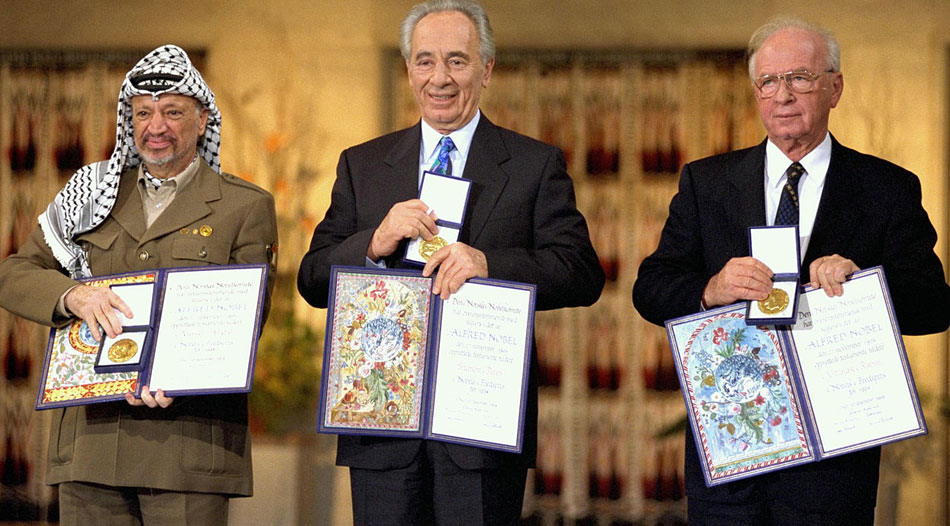
There were three crucial reasons for the Israeli Government of Yitzhak Rabin[ii] to start secret negotiations with the PLO and finally to sign an agreement with it in Oslo in 1993 and, therefore, to reverse the long-standing Zionist refusal to negotiate with this organization as a legitimate political representative of the Palestinian people: 1) The real fear of rising Islamic fundamentalism among the Palestinians who saw the PLO as a quite moderate organization in dealing with the Zionists and who, therefore, wanted more radical methods (terror acts) against Israel; 2) The political stalemate in the Washington talks; and 3) The pressure by the citizens of Israel to find a political compromise with the Palestinians (modus vivendi). As a result, under Israeli initiated secret negotiations directly with the representatives of the PLO, the talks have been organized in Oslo – the capital of Norway. The final product of these talks was a bilateral Israeli-PLO Declaration of Principles, which became finally signed in September 1993 in Washington.[iii]
The PLO with the cardinal diplomatic support by the Syrian Government achieved its crucial political goal in the Arab world when it was recognized in 1974 by all Arab states including and the Kingdom of Jordan as the only political representative of all Palestinians. In the coming years, there was substantial growth in power of the PLO followed by the growth of its paramilitary forces. Such a situation prompted the Government of Israel to take military action against the Palestinian refugee camps in 1981 followed by the invasion of South Lebanon in 1982 with the result that the headquarters of the PLO had to be relocated from Lebanon to Tunisia.
The Lebanon crisis was one of the crucial political problems in the Middle East in the 1970s and the 1980s. The Lebanese political system was and is founded on the basic principle of the distribution of power between several ethnic-confessional communities in the country: Orthodox Christians, Roman Catholic Christians, Armenian Christians, Maronites, Shia Muslims, Druzes, and Suni Muslims. However, the system of the distribution of offices is framed in such a way that it ensured the pre-eminence of the Maronites, regardless of the fact that they have not been since the beginning of the 1970s any more the largest single community in Lebanon. The opposition forces joined by the PLO’s guerrilla forces in the mid-1970s in the attempt to force the Maronites to agree to a secular democratic Lebanon, but have been both pacified by the Syrian military intervention in 1976. After that, the territory of Lebanon became the major arena of the conflict between Israel and the Arabs including the Syrian troops in permanent occupation and the Israeli invasion of South Lebanon in 1978 with the task to destroy the PLO and its HQ. However, the focal military invasion of South Lebanon by the Israeli forces was in 1982 when the PLO was expelled from Beirut and Lebanon but regardless of the presence of foreign (US and European) peace-keeping troops, the opposition forces succeeded to prevent the Lebanese Government to sign a peace agreement with Israel.
Being in Tunisia, frustration about several failures to bring about a quick resolution to the demands for a Palestinian state resulted in several splits and personal challenges to Y. Arafat as a leader of the PLO. Consequently, the PLO became outsmarted by more radical and Islamic organizations like Hezbollah[iv] and Hamas[v], which instigated the Second Intifada in 2000. In general, the PLO started to lose its political significance after the 1993 Oslo Accords and the establishment of the Palestinian Autonomy in 1994. Hamas as the organization, which is an Islamist group and not part of the PLO, emerged at the end of the 1980s rising in power and popularity among the Palestinians from the beginning of the 21st century, additionally declined the authority of the PLO especially in the Gaza Strip.[vi]
The PLO since Y. Arafat became elected as a Chairman of its Executive Committee in 1969, the organization became to act as an independent actor, not anymore being under the control of any Government from Arab countries. Regardless of the fact that the cardinal standpoint of the PLO HQ was armed resistance to the Zionist Israeli Government, there was a substantial lack of agreement within the framework of the “fedayeen” concerning both the fighting strategy and military tactics. However, on the one hand, the PLO in the 1970s and the 1980s gained international recognition to represent the Palestinians but on the other hand, its real ability to play this role in order to solve the Palestinian Question appeared to be much difficult. During the Jordanian crisis and civil war, the Governments of Arab states did not want to be involved into the conflict with Israel. At the same time, the long-standing strategic relationships between the USA and Israel have been established.
The PLO: From a “terrorist” organization to the legal representative of the Palestinian nation
From 1971 until 1988 the role of the PLO in the politics of the Middle East was rather marginal regarding several Arab-Israeli wars and peace negotiations. The crux of the matter was that each of Arab states had its own strategy in dealing with both Israel and the Palestinians and, therefore, each Arab Government required that the policy of the PLO and its activities to be compatible with its political strategy and whatever tactics it would be pursuing at the time. However, as a matter of very fact, the PLO in the 1970s and the 1980s technically could not participate in any peace process with the Israeli Government on behalf of the Palestinians as Israel proclaimed the PLO as a “terrorist” organization, while at the same time the Arab Palestinians have been regarding Israel as a “terrorist” state. An additional problem was as the main supporter of the Zionist Israel – the USA (the West Bank of Israel) – accepted the same Israeli policy towards the PLO what meant in the practice that both Washington and the PLO have been forced to the talks via secret diplomatic channels in their political contacts. Basically, Washington became a diplomatic mediator between the PLO and Israel.
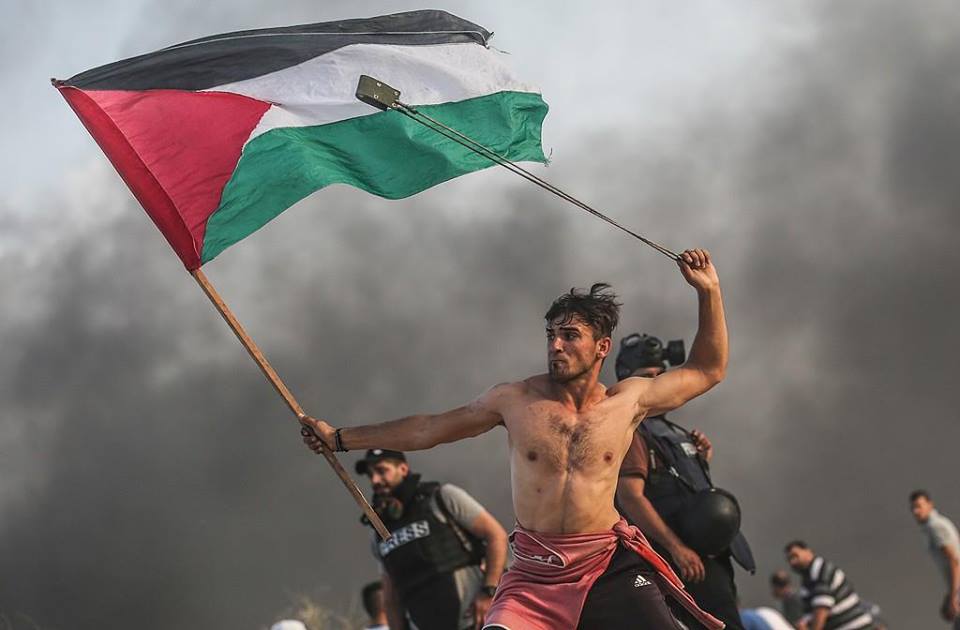 Nonetheless, such situation of the status and role of the PLO started to be changed when in 1988 the Jordanian King Hussein turned down the legal and administrative ties of the Kingdom of Jordan with the Occupied Territory of the West Bank directly in the favor of the PLO. The first political act of the PLO after that was that its leader. Yasser Arafat convened the Palestinian National Council (the PNC) which was a legislative body of the PLO which was electing the PLO’s Executive Committee. Y. Arafat on this occasion officially declared the existence of a Palestinian state within the territory of the West Bank and the Gaza Strip. The President of such a Palestinian state became Y. Arafat (proclaimed by the PNC). Soon, some 90+ states recognized Palestine as an independent state. The first political act of the post-1988 PLO was that Y. Arafat confirmed the PLO’s recognition of the 1947 UN Resolution 181 according to which the territory of historical Palestine is going to be divided into two independent states: Israel and Palestine. Consequently, the PLO recognized the right of Israel to exist as a state in the region. Furthermore, the PLO recognized as well as two UN Resolutions 242 and 338 and renounced all forms of terrorist acts (against Israel). Obviously, such a political move by the PLO was extremely welcomed by both Israel and the USA and the latter lifted its ban on America’s dealing with the PLO. However, more radical Palestinian and Arab forces accused Y. Arafat of great treachery of the Arab Palestinian national interests.
Nonetheless, such situation of the status and role of the PLO started to be changed when in 1988 the Jordanian King Hussein turned down the legal and administrative ties of the Kingdom of Jordan with the Occupied Territory of the West Bank directly in the favor of the PLO. The first political act of the PLO after that was that its leader. Yasser Arafat convened the Palestinian National Council (the PNC) which was a legislative body of the PLO which was electing the PLO’s Executive Committee. Y. Arafat on this occasion officially declared the existence of a Palestinian state within the territory of the West Bank and the Gaza Strip. The President of such a Palestinian state became Y. Arafat (proclaimed by the PNC). Soon, some 90+ states recognized Palestine as an independent state. The first political act of the post-1988 PLO was that Y. Arafat confirmed the PLO’s recognition of the 1947 UN Resolution 181 according to which the territory of historical Palestine is going to be divided into two independent states: Israel and Palestine. Consequently, the PLO recognized the right of Israel to exist as a state in the region. Furthermore, the PLO recognized as well as two UN Resolutions 242 and 338 and renounced all forms of terrorist acts (against Israel). Obviously, such a political move by the PLO was extremely welcomed by both Israel and the USA and the latter lifted its ban on America’s dealing with the PLO. However, more radical Palestinian and Arab forces accused Y. Arafat of great treachery of the Arab Palestinian national interests.
However, Israel still did not want to recognize the PLO as a political representative of the Palestinian people to negotiate a peace settlement with Israel. That was visible in the following Madrid Peace Process when the Israeli PM, Yitzhak Shamir, did not want to negotiate with Yasser Arafat. From the point of view of Y. Shamir, if Israel will negotiate with the PLO it would be, in practice, to legitimate the position of the PLO as calling for a Palestinian independent state and the return of Palestinian refugees. Therefore, his Israeli Government at this point was more nationalistic and radical compared to the PLO. For the international community, but especially for Washington, since 1990 it became clear that some diplomatic “covers” had to be established before the official Israeli Government and the PLO would seat together to negotiate on the peace plan in the Middle East. Such “cover” was, for instance, a Joint Jordanian-Palestinian delegation composed of all the Palestinians coming from the Occupied Territories and all of whom have been elected by the PLO. It was appointed an advisory group for the support of the negotiating team which has been including those members which Israel would not allow on the team as it was one from East Jerusalem, and one from the Palestinian diaspora. Therefore, on the one hand, the Palestinians had a representative negotiating team which the Israeli Government could formally say that it did not deal with the PLO nor it had recognized East Jerusalem as part of the Occupied Territories.
The further political development of the Middle East depended on the current political conditions in the region. More precisely, in 1991−1993, living conditions in the Occupied Territories became tremendously worst followed by the violence within the framework of human deaths and material destruction. In those years, the PLO lost a significant part of its financial aid usually as a direct consequence of its pro-Iraqi position during the First Gulf War in 1990−1991. At that time, as a matter of very fact, the economy of Israel has been strongly influenced by political events in the Occupied Territories and, therefore the Governments of Israel have been under constant political pressure to revive the political process with the Palestinians (if fact, with the PLO). Consequently, secret political negotiations between the Government of Israel and the Palestinian political-national representatives in the form of the PLO have been done within 8 months from January to September 1993 which began in Oslo (Norway).
The Israeli Government of Yitzhak Rabin offered to the PLO a proposal according to which, initially the Gaza Strip (out of the Jewish settlements) followed by the city of Jericho on the territory of the West Bank are going to receive the status of self-government. This Israeli proposal was, in fact, supported by Y. Arafat himself and a majority of the PLO Executive Committee contrary to the opposition of many Palestinians including even the members of the negotiating Palestinian team. The final result of the Israeli-PLO negotiations has been the Oslo Declaration of Principles which have been founded on UNO Resolutions 242 and 338, provided for a gradual withdrawal of the Israeli military forces during the following 5 years from the Occupied Territories, the creation of the Palestinian Authority, Final Status negotiations with regard to Jerusalem, the return of the Palestinian refugees, about Jewish settlements, and, finally, about borders. After the negotiations, it was a sign, the Oslo 2 Agreement in September 1995 in Washington, D.C. which gave a provision for an extension of the Palestinian autonomy in the West Bank. One month later, Y. Rabin was killed by a Zionist fundamentalist.
In 1994 the PLO established a Palestinian Authority with the municipal self-governing powers within the lands from which Israeli military forces have been re-deployed. The elections for the Palestinian Legislative Council and for the presidency of the Palestinian Authority were held in January 1996, which have been won together by Fatah and Y. Arafat.
The PLO accepted such an agreement with the Israeli Government as it was a weaker partner in the process of negotiations and having little diplomatic support within the Arab world. Consequently, both Islamic extremists and some local Palestinian leaders in the Gaza Strip and the West Bank challenged Y. Arafat’s leadership of the Palestinians and, therefore, did not accept the result of the negotiations. As to oppose the PLO, Hamas accepted the military tactics of suicide bombings in retaliation for the Zionist attacks on the Palestinians. One such bloody Zionist attack was, for instance, the massacre by US-born Zionist settler in 1994 of 29 Palestinian civilians who have been praying in the Ibrahim mosque in Hebron. Nevertheless, there were and other committed terror acts by Hamas which have been primarily motivated by a wish to disrupt the Oslo negotiating process.
To be continued
Reposts are welcomed with the reference to ORIENTAL REVIEW.
Endnotes:
[i] David Makovsky, Making Peace with the PLO: The Rabin Government’s Road to the Oslo Accord, London−New York: Routledge, 2018.
[ii] Yitzhak Rabin (1922−1995) was Israeli General and PM in 1974−1977 and 1992−1995. He was born in Jerusalem as the son of Russian immigrants. He became PM for the second time on July 13th, 1992 with Shimon Peres as his Secretary of Foreign Affairs. Being strongly encouraged by Sh. Peres, Y. Rabin started to work for the compromise with the Palestinians. As a consequence, his Government recognized the PLO in the Oslo Accords. He signed the 1993 Gaza-Jericho Agreement according to which, the first Palestinian areas were given autonomy status. He reached the peace treaty with King Hussein of Jordan in 1994 and in the same year together with Y. Arafat and Sh. Peres, he was awarded the Nobel Peace Prize. He was killed next year by a Zionist extremist after addressing a peace meeting in front of over 100.000 supporters when he was explaining that Israeli security would not be put at the risk by a peace treaty with the PLO of Y. Arafat.
[iii] Geoffrey R. Watson, The Oslo Accords: International Law and the Israeli-Palestinian Peace Agreements, Oxford−New York: Oxford University Press, 2000; Petter Bauck, Mohammad Omer (eds.), The Oslo Accords, 1993−2013: A Critical Assessment, Cairo−New York: The American University in Cairo Press, 2013.
[iv] Hezbollah (in Arab, “party of Allah”) is a radical Islamic fundamentalist party and guerrilla organization. It became established as a response to the Israeli military occupation of South Lebanon in 1982−1984. Hezbollah was chiefly committed to the expulsion of the Israeli military from Lebanon and for this purpose, Hezbollah committed regular terrorist attacks on both military and civilian targets in North Israel. Nevertheless, finally, it accepted an idea of total destruction of the state of the Zionist Israel but at the same time and an idea of the creation of a theocratic Islamic Palestinian state. In response to the 1994 Gaza-Jericho Agreement, Hezbollah joined a radical Arab alliance to fight the subsequent peace procedure in the Middle East, which it managed to put at serious risk in 1996 when Hezbollah’s attacks on North Israel provoked heavy Israeli bombardment of South Lebanon.
[v] Hamas (in Arab, Enthusiasm) is a Palestinian patriotic guerrilla organization that was created in the Gaza Strip. Soon, the organization became radicalized on the basis of poverty, unemployment, and above all the Zionist military rule. Hamas is financed from Iran by annual donations of circa 30 million USD, and the organization is managing to recruit some 8.000 guerrilla freedom fighters against the oppressive Zionist Israel. Hamas together with Hezbollah led the Second Intifada in 2000 and became a leading Palestinian radical organization in the Gaza Strip. During the last 20 years, almost 50% of the Palestinians in Israeli prisons are members of Hamas. This organization opposed the 1994 Gaza-Jericho Agreement between the PLO and Israel as well as the rule of the rival PLO in the Gaza Strip. In this Palestinian territory, Hamas is enjoying substantial support compared to the PLO during the last two decades. Hamas is building hospitals, schools, and other facilities for the Palestinians in the Gaza Strip and, therefore, it is seen by much of the population as a positive political influence in the Palestinian struggle against the Zionist Israel. However, the constant attacks by Hamas against Israel led to a radicalization of the Israeli electorate. At the same time, Y. Arafat became unable to prevent Hamas effectively, owing to the support it enjoyed in the Gaza Strip. By 2002 Hamas basically succeeded in its political aims.
[vi] Jonathan Schanzer, Hamas vs. Fatah: The Struggle for Palestine, New York: St. Martin’s Press, 2008.
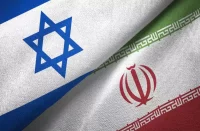

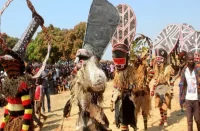




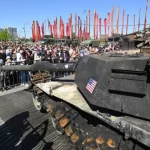






“The CREATION OF ISRAEL by the EU,after WW2,WAS DONE TO EXPORT THE JEWS TO ISRAEL – BY SUASION,PERSUASION AND COERCION.It is ALSO the EU and UK,who SUPPLANTED THE PALESTINIANS,in Israel.”
Y ?
Y did the EU, create the state of Israel ? It was NOT to export the Jews,to Israel !
It was, to CONCENTRATE,AS MANY JEWS,AS POSSIBLE,IN 1 GEOGRAPHY !
Y ?
It was to make THEM, A PRIME TARGET – WHICH CANNOT BE SAVED OR DEFENDED !
Yaweh said to Abraham that he gave to HIS SEED the land from the Nile to the Euphrates !
Genesis 15:18
On that day the LORD made a covenant with Abram, saying, “To your descendants I have given this land— from the river of Egypt to the great River Euphrates”
— But Yaweh did NOT say – for how long ! That Dream died with David and Solomon – and then, the Curse of Solomon on the Jews began !
BENJY IS TRYING TO REVIVE THAT DREAM – which is NOT ORDAINED,and WHICH IS DOOMED TO FAIL !
Besides,there is the Prophecy in the Quran and the Hadeeth – which foretells, the DESTRUCTION OF ISRAEL, and the JEWS !
THEREFORE,in essence,IN A VERY SHORT TIME,the world will know – WHICH SCRIPTURE IS THE REAL WORD,WHO IS THE REAL PROPHET and WHICH WAS THE TRUE PROPHECY !
Hamas,Hezb,Persia … are on the path to fulfiling the Islamic Prophecy (As per them),and Benjy is fulfiling HIS interpretation, of the Rabbinic and Talmudic,Biblical prophecies for ISRAEL.
1 SIDE HAS TO BE CREMATED – W/O ANY RESURRECTION HOPES !
WHICH ONE WILL IT BE ? dindooohindoo